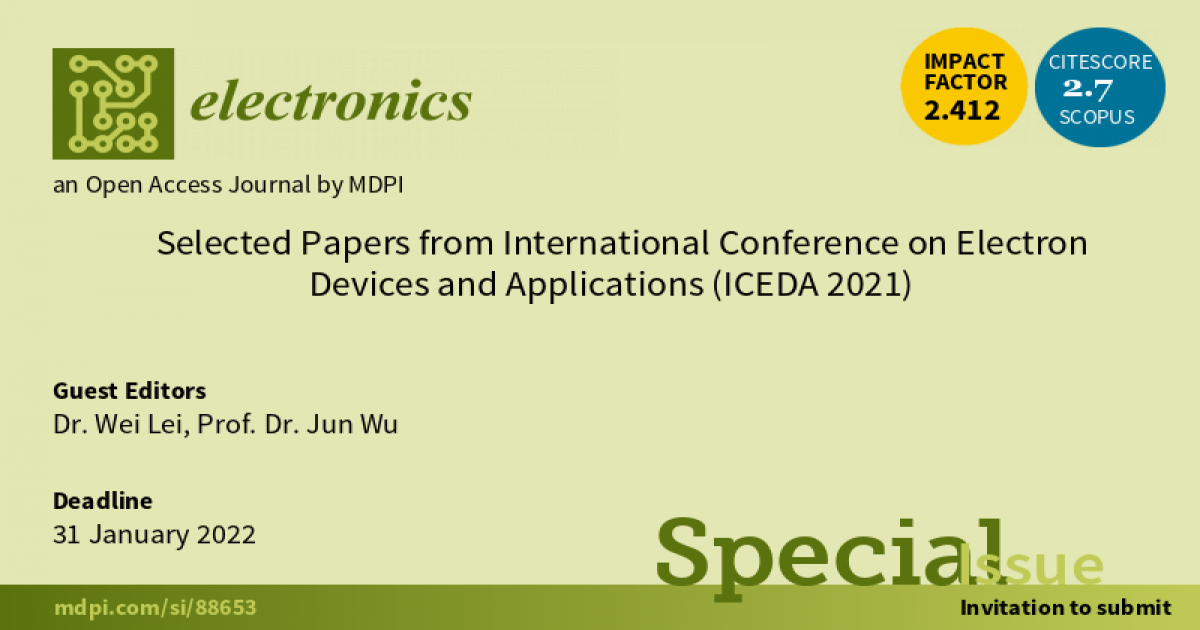Selected Papers from International Conference on Electron Devices and Applications (ICEDA 2021)
A special issue of Electronics (ISSN 2079-9292). This special issue belongs to the section "Microelectronics".
Deadline for manuscript submissions: closed (31 January 2022) | Viewed by 7951

Special Issue Editors
Interests: lighting; display; photo detection
Interests: stretchable sensors and flexible hybrid electronic systems
Special Issues, Collections and Topics in MDPI journals
Special Issue Information
Dear Colleagues,
Electronic devices are widely used both in industry and in daily life in applications such as information processing, telecommunication, and signal processing. Technology has been developing at a fast pace in recent decades, and we are now seeing not just technology enthusiasts who feel the need to upgrade to the latest gadget as soon as it is released, but also regular members of society who find it difficult to spend even a few hours without their mobile phone, tablet or laptop, all of which have become an indispensable part of our everyday routine.
This Special Issue is the product of the collaboration of the Electronics journal with the 2021 International Conference on Electron Devices and Applications (ICEDA 2021) to be held in Nanjing, China on 14–16 August 2021. Website: www.iceda.org
The objective of the ICEDA 2021 is to support the sharing of the latest research results between scientists in the relevant fields.
This Special Issue will review papers based on presentations made at the ICEDA conference, as well as other relevant contributions.
Dr. Wei Lei
Prof. Dr. Jun Wu
Guest Editors
Manuscript Submission Information
Manuscripts should be submitted online at www.mdpi.com by registering and logging in to this website. Once you are registered, click here to go to the submission form. Manuscripts can be submitted until the deadline. All submissions that pass pre-check are peer-reviewed. Accepted papers will be published continuously in the journal (as soon as accepted) and will be listed together on the special issue website. Research articles, review articles as well as short communications are invited. For planned papers, a title and short abstract (about 100 words) can be sent to the Editorial Office for announcement on this website.
Submitted manuscripts should not have been published previously, nor be under consideration for publication elsewhere (except conference proceedings papers). All manuscripts are thoroughly refereed through a single-blind peer-review process. A guide for authors and other relevant information for submission of manuscripts is available on the Instructions for Authors page. Electronics is an international peer-reviewed open access semimonthly journal published by MDPI.
Please visit the Instructions for Authors page before submitting a manuscript. The Article Processing Charge (APC) for publication in this open access journal is 2400 CHF (Swiss Francs). Submitted papers should be well formatted and use good English. Authors may use MDPI's English editing service prior to publication or during author revisions.
Keywords
- semiconductor devices
- optoelectronics
- imagers
- displays and lighting sources
- CAD technology and benchmarking






